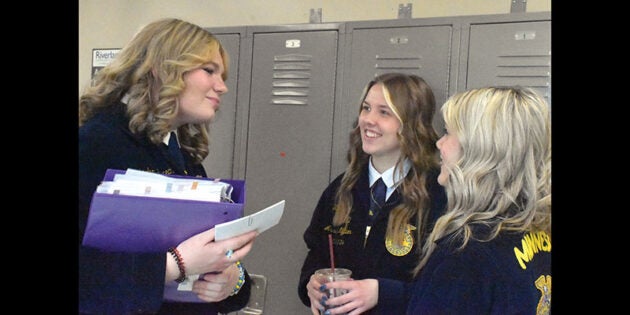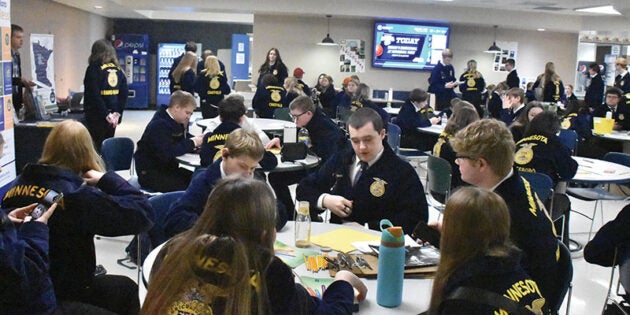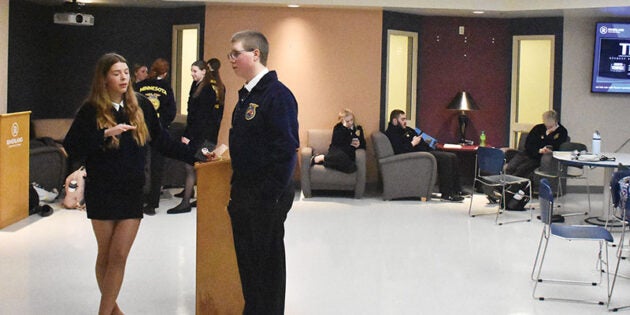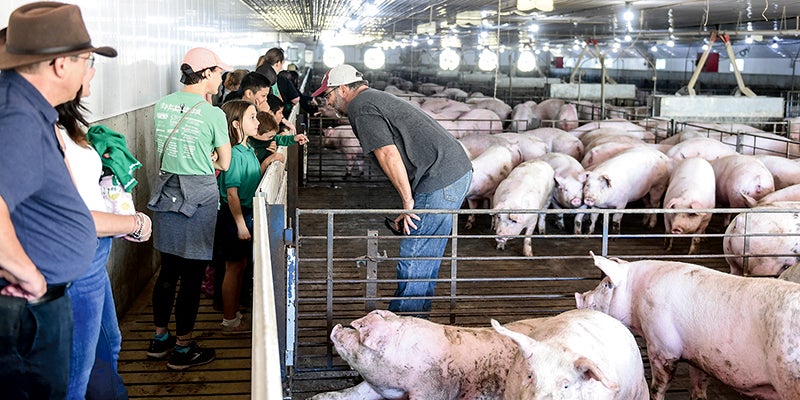Leadership Day a chance for FFAers to gather and exchange ideas ahead of National FFA Week
Published 5:37 pm Tuesday, February 13, 2024
|
Getting your Trinity Audio player ready...
|
Riverland Community College was packed with nearly 150 high school students representing the FFA at the Region 8 Winter Leadership Day on Feb. 9.
With National FFA week set for Feb. 17-24, the students were fully invested in the event, which included contests, plans for community service projects and applications for awards. Nick Schiltz, Agriculture, Food, and Natural Resources (AFNR) Instructor at RCC, said the FFA is growing more important every day with less and less kids growing up on farms.
The Leadership Day was a great chance for those who are in FFA to gather and share ideas with members from other communities in Southeast Minnesota.
“For a lot of students, this is the pinnacle of their FFA experience,” Schiltz said. “For seasoned students, they’re able to reflect on what they’ve done over many, many years and receive some sort of award, distinction or accolade. You have students in their first year and some in their third or fourth year and it becomes a big circle between beginning and finish. It’s important for students to come to events like this. They begin to see that agriculture is different than what they thought it was. When they see other students participating in different projects. They realize there is opportunity in all of these different areas.”
There were 18 students signed up for FFA in Austin this year and they’ve stayed involved in the community through programs like Feed the Farmer, where they bagged up lunches and delivered them to local elevators for farmers. The FFA also competes in competitions and according to Kim Schechinger, co-FFA advisor at Austin High School, Austin had a horse team and a livestock team compete in Regionals, with the livestock team advancing to the state convention, which will be held in late April in St. Paul. There is also an Ag Mechanics team from Austin that is trying to get to state.
“The kids are just really good kids to come and work together and we have great mentors,” Schechinger said. “We rely on the community to help out, because we can’t do it all for them. You can’t be there every day.”
Schiltz said the changing dynamic in farming has made it harder to steer the youth towards a career in agriculture, but it’s still as important as ever.
“It’s a big challenge. How do we get kids of all different backgrounds to appreciate what’s happening and find pathways for them in careers in AFNR? It’s not easy, but we try to ignite that flame in each student. When you strike that match and make that ember, you never know what it might be. When you give them different experiences and activities, maybe one hits home with them,” Schiltz said. “It’s important that opportunities exist to showcase AFNR. Agriculture is the backbone of America’s economic machine. At a time when close to 50 percent of all careers are related to one of the eight pathways of AFNR, you would assume that more people would have a story to share about how our food comes from farm or field to our dinner table. But only two percent of our population has direct ties to the production of agriculture. It’s important that ag education continues to sustain itself and grow in opportunities.”








